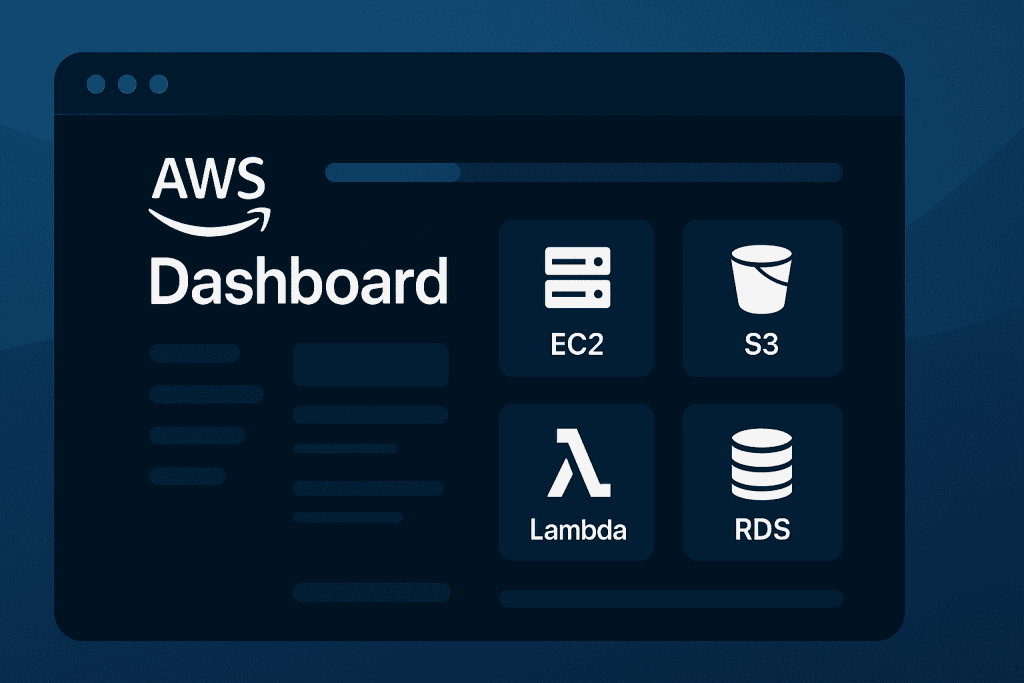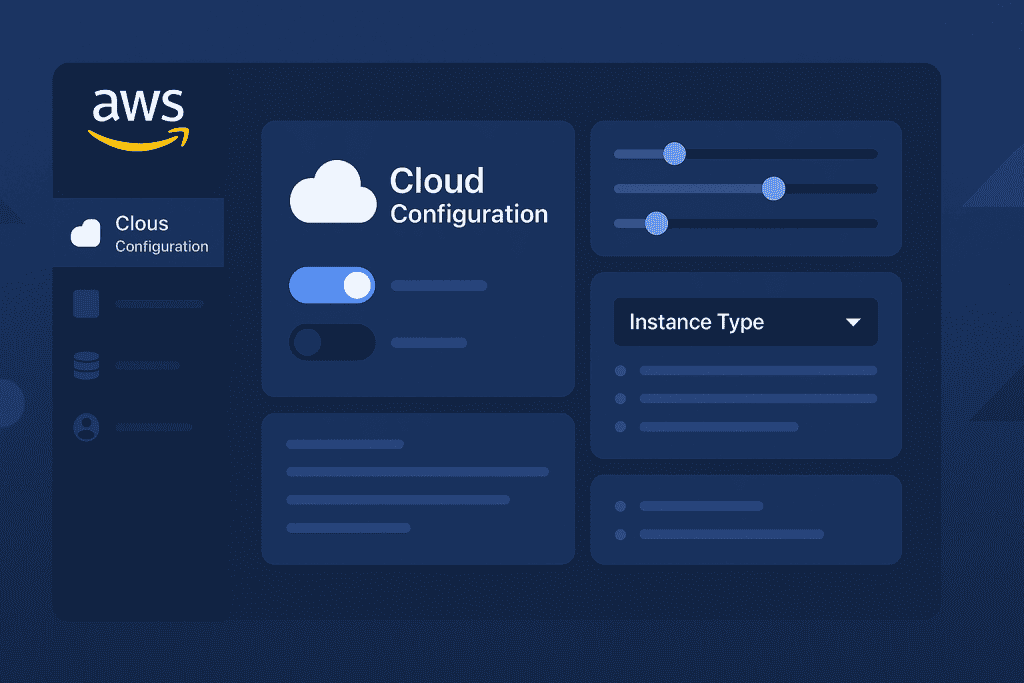
When you think of cloud computing, what name pops up first? For millions of users around the world, it is Amazon Web Services. And for good reason. AWS is not just another cloud provider. It is the engine that powers some of the most dynamic organizations on the planet, from Netflix to NASA. That is not an exaggeration; it is a reality backed by innovation and proven success.
Recently, I decided to explore AWS from both a developer’s perspective and a business strategist’s mindset, eager to find solutions that are scalable, secure, and affordable. At first, I wondered if it would be overwhelming, complicated, or perhaps too expensive for smaller businesses.
What I found, however, was something much more exciting. Amazon Web Services offers a treasure trove of resources for everyone, whether you are a startup founder, a teacher creating online courses, or a nonprofit aiming to change the world. AWS has the power to unlock growth and opportunity at every level, and today I am excited to share exactly why it stands out as a true leader in the cloud computing world.
Overview of Amazon Web Services
Amazon Web Services, commonly known as AWS, is a secure cloud services platform developed by Amazon. It offers computing power, database storage, content delivery, and other functionality to help businesses scale and grow. Launched in 2006, AWS has evolved into a comprehensive ecosystem of services that cater to startups, enterprises, and public sector organizations.
Key Features of AWS include:
- Elastic Compute Cloud (EC2): Flexible virtual servers that you can scale as needed.
- Simple Storage Service (S3): Reliable and cost-effective object storage.
- AWS Lambda: Serverless computing—code runs in response to events.
- Relational Database Service (RDS): Manage databases without the heavy lifting.
- Identity and Access Management (IAM): Secure user access control.
- CloudFront: Fast content delivery through a global CDN.
These tools aren’t just bells and whistles—they’re the backbone of modern cloud infrastructure. AWS’s agility and range have empowered businesses to adopt advanced technology with confidence.
In-Depth Analysis of Amazon Web Services

Stepping into the AWS universe is like entering a digital amusement park. There’s something for every business need. But is it as intuitive and robust as they say? Let’s explore.
Performance and Speed
AWS’s global data center network is legendary. During tests, latency was impressively low, and uptime reached the advertised 99.99% SLA. Whether hosting an app or running analytics, the speed feels almost instantaneous.
Usability and Learning Curve
Truthfully? AWS can be overwhelming at first. There’s a lot going on. However, their documentation is gold. AWS’s console interface has improved over the years, and features like the AWS Free Tier help you experiment without burning money. For new users, services like Lightsail simplify deployment.
Security and Compliance
Security is baked into AWS’s DNA. From firewalls to encryption, everything is crafted with enterprise-grade protection. Services like IAM and AWS Shield offer strong defense mechanisms. Plus, it complies with global standards—HIPAA, ISO 27001, SOC 1/2/3, and more.
Cost Structure
Let’s be real: AWS isn’t cheap. But it is fair. Their pay-as-you-go model means you only pay for what you use. For startups, that’s a dream. However, without budget monitoring, costs can spike. Tools like AWS Budgets and Cost Explorer help prevent surprises.
Scalability and Flexibility
One of the most thrilling aspects of AWS is its scalability. You can launch an app for 100 users and scale to a million overnight—without skipping a beat. The flexibility is unmatched, whether you’re deploying machine learning models or hosting a static website.
Innovation and Ecosystem
AWS keeps innovating. With services like SageMaker for AI and IoT Core for smart devices, it stays ahead of the curve. The partner ecosystem is massive, with support for almost every programming language, platform, and framework you can imagine.
Amazon Web Services Comparison
AWS isn’t alone in the cloud space. Let’s compare it with its top contenders: Microsoft Azure and Google Cloud Platform (GCP).
| Feature | Amazon Web Services | Microsoft Azure | Google Cloud Platform |
|---|---|---|---|
| Market Share | 32% | 22% | 11% |
| Global Reach | 32 Regions | 60+ Regions | 35+ Regions |
| Free Tier | 12 months + always | 12 months | $300 credits for 90 days |
| UI/UX Simplicity | Moderate | Moderate | Easy |
| AI & ML Tools | Advanced | Strong | Cutting-edge |
| Open-source Support | Excellent | Good | Excellent |
| Cost Optimization | Great tools, complex | Transparent | Straightforward |
In short, AWS leads in innovation and ecosystem maturity. Azure shines in enterprise environments. GCP is strong in machine learning and open-source.
Pros and Cons
Before diving in, here’s a quick snapshot to weigh your options.
| Pros | Cons |
|---|---|
| Extensive global infrastructure | Can be complex for beginners |
| Scalability and flexibility | Costs can balloon without monitoring |
| Secure and compliant | Some services have steep learning curves |
| Constant innovation | Customer support can vary |
Conclusion

After spending weeks building, testing, and experimenting with Amazon Web Services, one thing became crystal clear: it’s not just a service—it’s a platform that empowers innovation. From solopreneurs to Fortune 500s, AWS offers something for everyone. Yes, it has a learning curve. Yes, costs can spiral. But with planning and strategy, it can unlock growth you never imagined possible. If you’re serious about leveraging cloud computing for your business, Amazon Web Services is a smart bet.
AWS Rating
Having tested its breadth and depth, I give AWS a solid 4.7 out of 5 stars. The power, scalability, and ecosystem are unmatched.
FAQ
What is Amazon Web Services best used for?
Amazon Web Services is best used for hosting applications, data storage, content delivery, and machine learning solutions. It offers the flexibility and scale businesses need for modern, cloud-based infrastructures.
Is Amazon Web Services suitable for small businesses?
Yes, AWS provides a free tier and scalable solutions tailored for small teams and startups. Tools like AWS Lightsail simplify usage for those just getting started.
How does Amazon Web Services handle security and compliance?
AWS offers enterprise-grade security with encryption, firewalls, IAM, and compliance with standards like HIPAA, GDPR, and ISO certifications—ensuring your data is always protected.
Resources
- Amazon Web Services. What is AWS?
- Gartner. Amazon Web Services Overview
- PCMag. Amazon Web Services Review
- Glassdoor. AWS Employee Reviews
- Indeed. AWS Company Reviews
